In the Unconventional City Planners series, Mackenna Caughron will explore three unconventional planners and their machinations of the city. This is part 1 of a 3 part series.
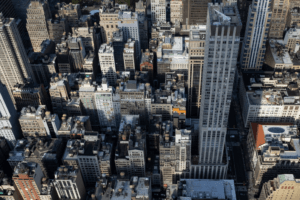
Raised in Senegal and New Jersey. Investor in solar energy. Son of a professor/musician and a dancer. He reminisced on his upbringing, “I was that kid you see on National Geographic with no shoes on” (8:55).
Grammy-nominated songwriter of “Smack Dat” and “I Wanna Love You”.
And yes, an urban planner (of sorts).
—
Aliaune Damala Badara Akon Thiam, known in popular culture as “Akon” exploded our musical zeitgeist in 2004. Since the release of his debut album “Trouble”, he’s received multiple RIAA accolades, filmed sultry music videos, and shaped the beat blasting in clubs worldwide.
Yet, with this success, we see discomfort. “One of my biggest fears was just being known for singing and dancing.” he noted. Throughout interviews, he acknowledges a desire to use his wealth to uplift Africa.
Ten years after releasing his first album. Akon co-founded Akon Lighting Africa, which sought to provide sustainable energy for communities in Africa. The program spread to 14 countries to 480 communities funded through a $1B line of credit from Chinese and other international firms (its website sits dormant and its https://twitter.com/akonlighting?lang=en, so it’s unclear if the project is presently active).
Akon continued to enjoy his musical career, though something changed in 2018. Akon sat down to watch a movie, and left with an idea. The Marvel superhero movie Black Panther featured a dazzling cast – Chadwick Boseman, Michael B. Jordan, Lupita Nyongo’o. Despite laudatory performances by the film’s actors, it was the setting of Wakanda, the futuristic, techno-centric, coveted African city, that stole the show.
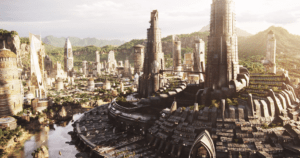
Akon pulled together a team. On the coast of the North Atlantic Ocean, he announced “Akon City” – the not-yet-built development project with a $6B price tag. After examining the city’s publicly available plans and objectives, what can we learn from this city planner best known for a music career?
Location of Akon City
By 2024, Phase 1 of Akon City will sit on 2,000 acres – roughly 60 miles from Senegal’s capital of Dakar, one hour from a newly built international airport.
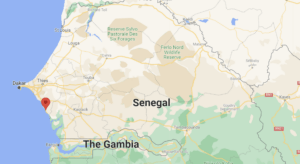
The area is fairly sparse in terms of urban development. Looking at the site from the nearest highway, the setting is bucolic. Akon envisions a dramatic transition to retrofit the area for his planned grandeur.
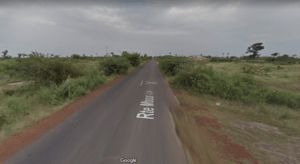
Urban Experience
Stepping into Akon City will land visitors into a scene from Star Wars, another entity under the Disney umbrella.
The city will combine buildings, paths, parks, and roads – not surprising. When walking through the city, individuals will notice open parks adorned with local fauna. Amorphous buildings rising to impressive heights, inspired nearby waves of the Atlantic, will draw the eye up. You’ll see students, doctors, tourists, locals, and even celebrities (beyond Akon, even). At the cashier, we won’t reach for our wallet, but instead our phone to pay with Akoin.
For experiencing the city by car, a “smart” parking system awaits, with a focus on “e-parking, automated parking system[s], e-transportation“. Though the city is approximately 2.5x the size of Central Park, the plan knits the city’s functions into districts, promoting walkability.
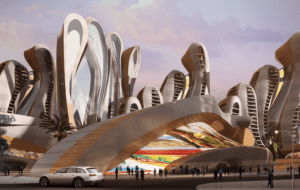
The Technology District intends to spark local economies with skilled jobs and to attract global capital. The Entertainment District showcases a resort/spa, mall, casino and sport stadium with Olympic aspirations. The “African Culture Village” delivers luxury hospitality experiences to spur a competitive tourism sector. An Education Hub, Health and Safety district, and scattered Offices and Residential buildings cater toward a burgeoning professional job sector. Last and certainly not least, Akon City houses “Senewood”, a cheeky wink to Hollywood. Senewood will house film, music, and television studios.
In navigating the city, lost individuals can look toward the city’s tallest building, appropriately named “Akon Tower”, standing at 68 stories tall. Its contents are a hallmark of its maker, combining a recording studio, club, hotel, and office space. Akon Tower will ground directionality into the city, akin to looking south to the World Trade Center and north to the Empire State Building.

Purpose
The intent of Akon City is part-thriving metropolis, part-campaign for its creator. Akon City location promoted its tourism ambitions with an oceanfront proximity to the airport. Local politicians have applauded the idea, giving the land to Akon with a specialized tax designation. Tourism attempts to create economic viability through its draw of people and financial capital.
Though, the city serves another purpose, a physically built testing ground for Akon’s cryptocurrency, Akoin. Cryptocurrency generally gained a foothold in African countries, and Akon is betting that the continent (who has the world’s youngest continental population – 70% of individuals under 30) will benefit from his financial system in opposition to volatile local currencies.
Akon City heaves forward with the dreams of its creator and a nation. Is the weight of imagination too much to carry?
Challenges
The early ideation of Akon City was met with criticism.
From the initial creative reveal, Akon City faced pushback over hiring international partners for development. A Dubai-based firm “BadConsult” (which, can we all agree, probably not the best name for an architectural design firm) created the renderings of the city, which were panned, namely for not drawing local inspiration or acknowledging Senegal’s climate realities. KE International, an American engineering and consulting firm, secured the first $4B in funding and will construct Phase 1, which also drew ire as the selection – once again – is international.
In researching Akon City, publicly-available details seem… vague. The Akon City website has broken links and lofty platitudes, and plants the question, this is all great – but how? And who is this for?

And really, who is this city for? Akon claims the city is for everyone “from janitors to engineers…” and a portion of housing (30%) would be affordable to “the lower half of the wage market” (in 2020, Senegal’s GNI per capita was $1,430 or $3.92 per day). Tourism is a primary function of the metropolis. The project’s co-developer (the Society for the Development and Promotion of Senegal Coasts and Tourist Zone or SAPCO, Senegal’s state tourism agency) anticipates a country-wide tourism boost. It’s not clear if much thought has been given on how the needs of locals and international tourists will be managed and phased.
Focusing on the city’s characteristics, it’s hard to miss Akon’s fingerprints. “Senewood” clearly points to the music and entertainment industry, through which Akon earned his wealth. The tallest building, the currency, and the city itself all carry Akon’s name. Akon has received countless news articles attracting attention to this city. Word is spreading such that Uganda too is offering free land to develop a second Akon City.
Despite the rapid news cycle, progress stalls for Senegal’s Akon City. Reports are surfacing that locals are beginning to feel distrustful over whether the promises of jobs, upward mobility, investment, and opportunity will be kept.
What do we take away?
It is fruitless to characterize the intentions of this city’s author (though I must admit, Akon certainly knows the value of branding himself constantly with his projects). His objective in city planning, as he writes in a Fortune article, appears genuine.
Africa is one of the only places in the world that can start from scratch and implement every new technological development and invention coming to fruition today without the need to break down existing infrastructure.
This vignette demystifies Akon’s rationale behind the veneer of sparkly, bulbous building renderings. Akon made unpopular trade-offs, as every city planner must do. He decided to build in a “green field”, an area more frequented by agriculture than tourism. He decided to squeeze hefty ambitions of tourism, education, entertainment, cryptocurrency, and connected technologies into 2,000 acres. He decided to quietly pass over the pressing, pervasive problems currently experienced by Senegalese in favor of refocusing on a nirvana where all might belong, someday.
This line of questioning appears critical, but the project is admirable in a certain light. Senegalese deserve optimism led by USD $6B in investment. The inventory of current problems should not restrict big dreams. And arguably, the press (even this article) brings further attention to a country and a population that is oft-overlooked.
However, Akon leaves implementation concerns unaddressed, which puts the project at risk. With funding, architecture, and construction handed to American and UAE-based firms, local Senegalese will have to wait to see if the investment spreads to benefit their lives. At its most pessimistic, it is a burnt-out comet in the sky – firing over our heads, distracting us, but out of grasp. At its most optimistic, it could be a vanguard of a thrilling renaissance.
As one local reported, “They laid the foundation stone with a lot of speeches and promises. Compared to everything that was announced, I don’t think we have seen much yet.”
—–
It’s one thing to plan a city for everyone that contains everything. It’s something else entirely to build it. But when (or if) completed, people are going to go to Bananza.
This was such a fun read! Such a seamless mix of education and humor with a healthy dose of journalist skepticism. Kudos to you, Mackenna!